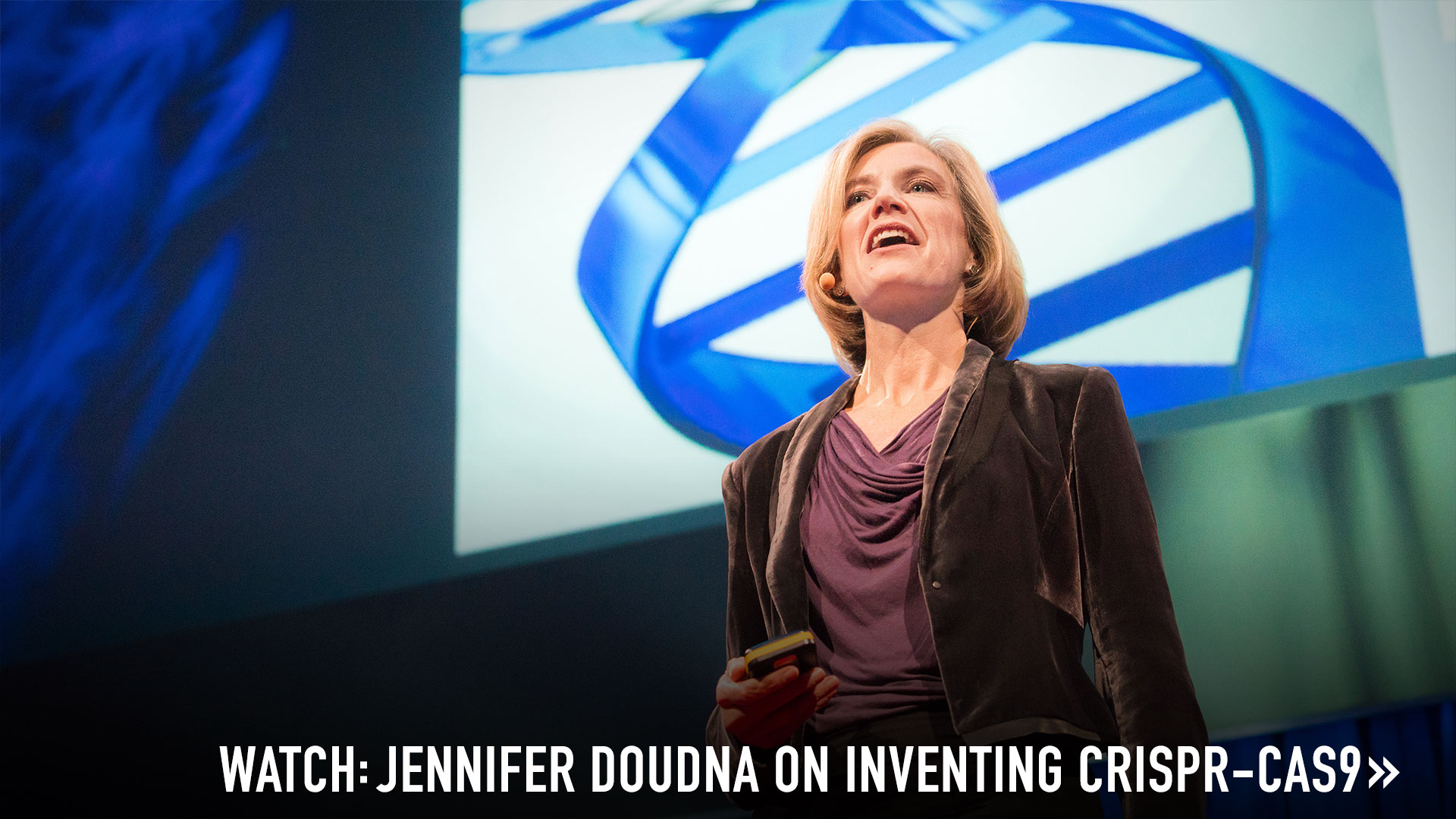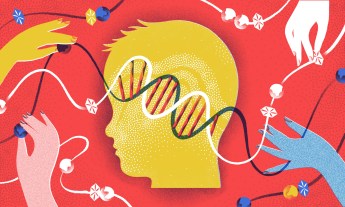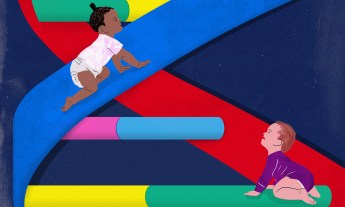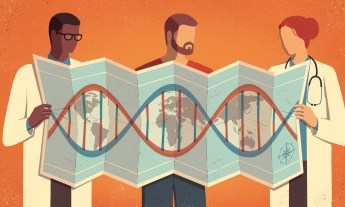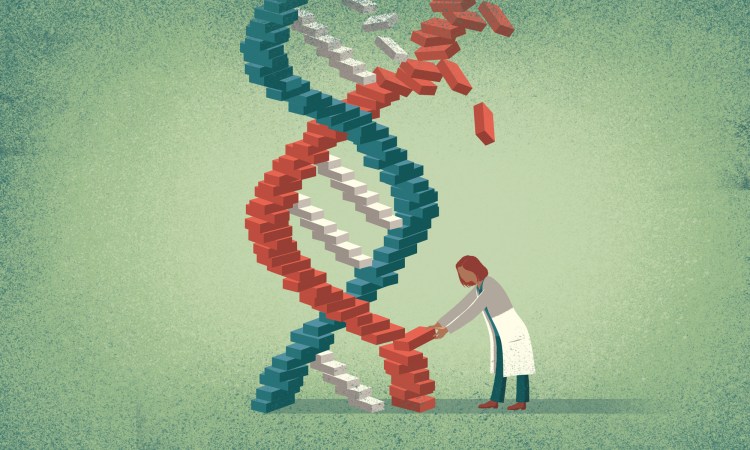
CRISPR-Cas9 could change the human genome for generations. Here’s why its inventor is trying to press pause.
Should scientists edit the human genome, striking out undesirable traits like so many typos? “My own views are still forming,” says Jennifer Doudna, who with her research partner, Emmanuelle Charpentier, developed a powerful gene editing technique at her University of California, Berkeley lab several years ago (TED Talk: We can now edit our DNA. But let’s do it wisely). “I’m still trying to get a handle on how and when and why would we want to use this.”
“This” is a genetic editing process that uses an enzyme with the ungainly name of CRISPR-Cas9 to precisely slice into a strand of DNA, snipping out genetic material with the precision of a scalpel. Aside from offering an unexpectedly high level of precision at removing specific As, Ts, Gs and Cs, the CRISPR-Cas9 technique opens a new Pandora’s box: when used on embryos, the genetic changes can be inherited from parent to child.
Since its invention, the CRISPR-Cas9 technique been used to put lab rats, monkeys, even non-viable human embryos under the genetic knife. But an ethical question hangs over whether the technique should be applied to living human embryos, where an edited gene can be inherited from one generation to the next. One fix could strike out a genetic illness from a family’s bloodline; one mistake could irrevocably alter the human genome in ways we can’t know.
That’s why Doudna, along with a panel of influential genetic scientists, has called for a worldwide pause on any experiment with the human genome. It’s also why she’s helping to convene a three-day summit this December at the National Academy of Sciences in Washington, D.C., where she and others will debate how far the world should take this technology. Doudna hopes the attendees will agree to some framework, any framework, for guiding responsible experimentation. Here’s what to expect.
Forget about a global consensus. “Oh, no,” Doudna says. “That’s not even remotely possible.” Gene editing is a polarizing issue, and her informal survey of the research community has turned up wildly divergent opinions. Some researchers favor a complete ban on edits to human embryos, preferring alternative treatments for genetic illnesses (in vitro screening, for instance, that identifies embryos with harmful mutations). Others believe that constraints on research could delay or prevent still-undiscovered cures. Doudna does not expect to solve these differences in three days, but she hopes that the opinions of scientific heavyweights can help shape the conversation. “Highly respected scientists do have a role to play in making a statement that invites people at least to consider their viewpoint,” she says. Bioethicists, lawyers, patient advocacy groups and government regulators will also be there to have their say. If that sounds like an unwieldy conversation, well, it will be. Fortunately, for Doudna, there’s a playbook for this sort of powwow.
This isn’t the first time scientists have paused unpredictable experiments. Doudna is following a script from the early 1970s, when the biochemist Paul Berg set off alarm bells with his groundbreaking research into recombinant DNA. In his experiments, Berg discovered a technique to join the DNA of two separate organisms into an artificially constructed hybrid. But he stopped short of actually combining one strand of cancerous DNA with another strand in a form that could multiply in gut bacteria — and potentially spread in unpredictable ways. His self-restraint, though, didn’t win him many points from the public. “I was inundated by calls,” he says, “calling me a ‘monster,’ so to speak, by ‘putting the general public and your colleagues at risk of getting cancer by the stupid experiment that you want to do.’” And he had to admit, his critics had a point. “It came down to saying, ‘What’s the probability of a bad outcome?’ and the answer was, ‘I couldn’t say that it was zero.’” So he and several colleagues published an open letter in Science calling for a worldwide moratorium on potentially hazardous DNA combinations, pending further discussion to take place one year later at a conference at Asilomar in California.
That moratorium lent urgency to the debate, but one recommendation for the CRISPR folks: Don’t use the word “moratorium.” The word tends to raise temperatures, along with questions about how exactly such an arrangement might be enforced, legally or otherwise. And, according to Berg, lawmakers tend to offer blunt solutions. “There were even liberal senators who got up on the floor and said, ‘I don’t understand this science at all,’” Berg recalls, “‘I never got past high school chemistry, blah, blah, blah, but I want to warn you that this is the most dangerous research ever undertaken in this country and I recommend that it be forbidden.’ So you get somebody confessing his ignorance and then telling you that they’re coming to a conclusion.” To avoid a legal rush to judgment this time, Doudna and an illustrious group of researchers, including Nobel laureates Berg and David Baltimore, co-authored a softly worded plea in the March 2015 issue of Science that skirted the word “moratorium” entirely. “We decided instead to call our approach ‘A Prudent Path Forward,’ and to call for what we called a ‘pause’ to the clinical application of the technology.”
Even if scientists do agree to a “pause,” it won’t hold for long. Scientists are trained to be curious, so don’t expect a warm reception for a pause, a moratorium or restraint of any kind. At the three-day Asilomar conference in 1975, some of the 140 attendees grumbled from the start. So rather than hold an abstract seminar on bioethics, Berg and team discussed the specifics of the experiments they wished to perform. For every risk of a dangerous organism escaping the lab, they brainstormed a method of containment. Gradually, a consensus formed on how to ease the moratorium while building safety measures around further experiments.
Lawyers might help slow science’s roll. Berg recalls that many scientists at the Asilomar conference were adamant that their experiments were perfectly fine — it was everyone else’s that were the problem. He suspects that most scientists might have the same attitude today — and advises Doudna to bring in the lawyers. After he did just that at Asilomar, he says, he detected a noticeable spike of introspection. “I think people would concede that one of the most important things that happened was when we heard from a group of lawyers who outlined the responsibility that each person had; how they could be financially destroyed or sued if anything happened as a result of negligence in their lab.” CRISPR raises a thicket of new liability issues. For instance: A human embryo, and all of its progeny, could never give informed consent. One botched edit could produce generations of plaintiffs.
Science is global, lucrative — and ultracompetitive. Let the science journals step up. Doudna will have to contend with a much wider array of players than Berg dealt with in 1975, when science was a smaller, more parochial research world dominated by American and European research institutes. “Science now is global,” she says. “We’ve got the social networks that make the availability of data and information almost instantaneous, almost anywhere.” And with that growth comes the heightened risk of a wayward experiment. Here, the editors of scientific journals could serve as gatekeepers, refusing to publish papers that don’t follow the guidelines.
Except that the money will be hard to resist. The National Institutes of Health announced in April that it would refuse to fund gene-editing experiments on human embryos. Still, that won’t solve for the enormous amount of private money that’s washing around this tech, not to mention the allure of fame for the researcher who brings the first “CRISPR baby” into the world. That’s why, even as she tries to push the pause button, Doudna is resigned to seeing human genome editing as a fait accompli. “I think at least in some jurisdictions in the world, people will move forward to do this,” she says. “So we just need to be discussing it and thinking about it.”
Illustration by Davide Bonazzi/TED.

